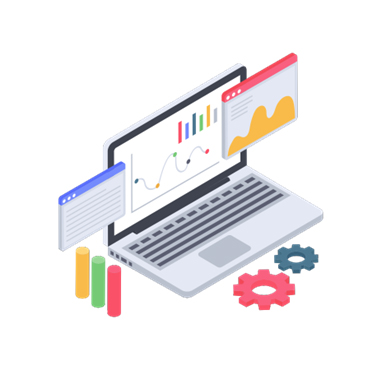Rethinking Marketing: The Superiority of Journey Marketing Over Traditional Funnels
Rethinking Marketing: The Superiority of Journey Marketing Over Traditional Funnels
For decades, marketers have relied on the traditional marketing funnel to guide consumers from awareness to conversion. However, the marketing landscape has evolved, and customer expectations have shifted. The traditional funnel is a static, linear model that fails to account for the complexities of modern consumer behavior. Enter journey marketing: a more dynamic, customer-centric approach that provides a holistic view of how buyers interact with brands.

The Limitations of the Traditional Funnel
- Overly linear: Funnels assume a straightforward progression toward conversion, ignoring non-linear buying behaviors.
- Lacks retention focus: Many funnels fail to include post-purchase stages like loyalty and advocacy.
- One-size-fits-all: Funnels often lead to broad, generic messaging rather than personalized engagement.
- Outbound-centric: They tend to prioritize outbound marketing efforts over inbound engagement.
- Lacks a journey cycle: Funnels do not account for churn, win-back strategies, or ongoing customer engagement.
The Power of Journey Marketing
- Recognizes the fluidity of customer interactions.
- Incorporates retention, upselling, cross-selling, and advocacy stages.
- Enables personalized, data-driven marketing strategies.
- Facilitates better alignment between marketing, sales, and customer service teams.
- Encourages inbound marketing strategies that align with customer motivations and behaviors.
- Provides an opportunity to automate and optimize touchpoints across various channels.
Mapping the Customer Journey
A journey map is a visual representation of how customers interact with a brand across various touchpoints. A well-constructed journey map provides valuable insights into customer motivations, needs, and pain points. Key components of a strong journey map include:
Goal definition
Customer research
Touchpoint analysis
Personalization strategies
Continuous optimization
Cross-functional collaboration
Leveraging Data for Journey Optimization
- Solicited data: Surveys, Net Promoter Scores, interviews, and direct feedback.
- Unsolicited data: Purchase history, search behavior, website interactions, product reviews, customer support data, and third-party insights.

By analyzing both types of data, marketers can design personalized campaigns that resonate with specific audience segments and improve engagement at every touchpoint.
The Benefits of Journey Software
- Multi-touchpoint configuration: Enables marketers to set up multiple interactions across different scenarios.
- Dynamic customer pathways: Allows for automated and adaptable marketing sequences based on customer actions.
- Real-time feedback loops: Collects insights from digital interactions (e.g., impressions, clicks, transactions) to refine messaging.
- Omnichannel integration: Supports email, web, mobile, SMS, call centers, and even in-store experiences.
- Automation & personalization: Delivers tailored experiences by recognizing customer behaviors and adjusting engagement strategies accordingly.
Common Journey Marketing Challenges (and How to Overcome Them)
- Lack of research: Ensure that journey maps are based on accurate, data-driven insights.
- Inactionable maps: A journey map should lead to specific marketing strategies and campaigns.
- Over-complexity: While comprehensive mapping is essential, keeping it actionable is just as important.
- Failure to evolve: Customer journeys should be continuously optimized based on new data and changing customer behavior.
- Lack of personalization: Avoid a one-size-fits-all approach by segmenting customers and tailoring their experiences.
Journey Marketing in Action: The Buyer Persona Approach
A key element of journey marketing is developing detailed buyer personas. Personas help marketers understand the motivations, challenges, and behaviors of their target audience.
For example:

- Age: 26
- Job: Financial analyst
- Income: $70,000-$90,000 CAD
- Needs: Investment advice and money-saving strategies
- Motivations: Wants financial security to retire early
- Pain points: Concerned about long-term savings and confused about investment options
- Journey: Researching financial planning resources online
By aligning marketing efforts with personas like Fiona, businesses can craft targeted campaigns that speak directly to customer needs.
The Future of Customer-Centric Marketing
Journey marketing is a game-changer in today’s digital landscape. By focusing on the entire customer experience rather than just conversion, marketers can foster deeper relationships, improve retention, and drive long-term brand loyalty.
Are you ready to move beyond the funnel? Start mapping your customer journeys today and unlock the full potential of your marketing strategy! To refine your marketing message and maximize your strategy, consider partnering with an external service provider.
Ready to get started?
Our experts can offer valuable insights, leverage proven use cases, and help optimize your campaigns based on the experience of working with a diverse range of businesses.
TL;DR article summary
The article contrasts the traditional marketing funnel with journey marketing, explaining how the latter offers a more dynamic, customer-centric approach.
While the traditional funnel is linear and brand-focused, journey marketing provides a holistic view of customer interactions, emphasizing personalization, data-driven strategies, and continuous optimization through marketing automation software.
The approach uses buyer personas and journey mapping to create more effective, targeted marketing campaigns that improve customer engagement and retention.
Sales Inquiries + 1 (514) 223 3648
General Inquiries + 1 (514) 392 9822
sales@munvo.com
© 2025 Munvo is a trademark of Munvo Solutions Inc.


